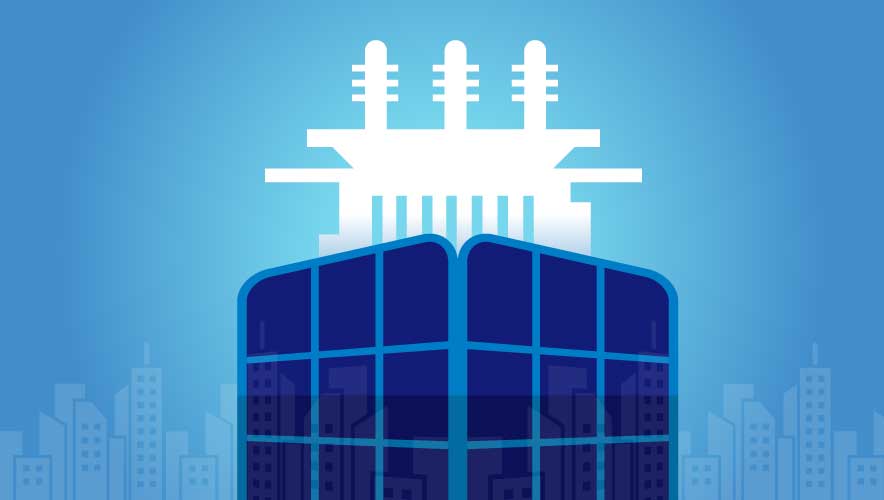The Internet of Things and Increasing Threats to the Electric Grid
The rise of the “smart grid” has brought about new benefits, such as enhanced efficiency, reliability, and sustainability. With the integration of Internet of Things (IoT) devices, the power grid has become more interconnected, allowing for better monitoring, control, and optimization of various systems operating within the environment.
But this increased connectivity also increases this attack surface, exposing the grid to new vulnerabilities that cybercriminals can exploit. Once exploited, threat actors can hijack these devices to manipulate energy flows, disrupt communication networks, and cause a loss of view.
What is the “Smart Grid?”
The concept of the “smart grid” refers to the seamless integration of the power grid with advanced devices, commonly known as the IoT. These devices are connected to the Internet with the ability to communicate, collect data, and perform tasks beyond their traditional functions. In the context of the electric grid, these IoT devices play a vital role in power generation, transmission, and distribution.
While pre-Internet smart devices, such as the first remote meter load management system, date as far back as 1974, the first true definition of the Smart Grid came from the U.S. Energy Independence and Security Act of 2007. The law defined the smart grid as “increased use of digital information and controls technology to improve reliability, security, and efficiency of the electric grid.”
The Internet has revolutionized smart technology by enabling seamless connectivity, data exchange, and the remote monitoring and control of devices. Here are some examples of IoT used in the power grid:
- Smart Meters: These devices are used to measure and record electricity consumption in real-time. Smart meters enable two-way communication between the utility company and the consumer, allowing for more accurate billing, remote monitoring, and demand response programs.
- Distribution Automation Systems (DAS): These sensors, switches, and relays are used in DAS to monitor and control the flow of electricity in the distribution network.
- Intelligent Monitoring Systems: They are equipped with sensors and communication capabilities and are deployed throughout the power grid infrastructure to monitor various parameters, including voltage, current, temperature, and line conditions. This data is used for predictive maintenance, fault detection, and performance optimization.
- Renewable Energy Management Systems: These devices are used to monitor and control renewable energy sources—such as solar panels and wind turbines—in the power grid. These devices optimize energy generation, storage, and distribution from renewable sources.
- Demand Response Systems: These include smart thermostats, smart appliances, and energy management systems, which enable demand response programs where consumers can adjust their electricity usage based on grid conditions or price signals. This practice helps balance electricity supply and demand.
These are just a few examples of the IoT devices used in the power grid. By leveraging the capabilities of IoT devices, the power grid becomes more efficient, reliable, and sustainable.
Power Grid Threats & Vulnerabilities
As IoT devices become more integrated into the power grid, the risk of cyberattacks increases. A coordinated attack could manipulate energy flows, cause cascading failures, disrupt power to critical infrastructure, and damage the grid infrastructure. This highlights the need for increased security measures to ensure the safety and stability of the power grid.
One major vulnerability is weak authentication and encryption. Insufficient authentication mechanisms and encryption protocols can leave IoT devices and communication channels vulnerable to unauthorized access. According to an article from CSO online, more than “90 percent of data transactions on IoT devices are unencrypted.”
Let’s look at the lack of security standardization in smart meters as an example. Although the Advanced Metering Infrastructure (AMI) has brought significant benefits, such as energy consumption and billing transparency between utilities and customers, it has also introduced new cybersecurity risks. Security researchers recently discovered a vulnerability in Schneider smart meters that transmits clear text credentials that, if intercepted, could allow an attacker to use the credentials to access smart meters, modify data, or launch a DDOS attack.
IoT devices within a smart grid can also be susceptible to ransomware and malware infections. While there isn’t evidence of smart grid-specific IoT malware yet, threat actors have proven sophisticated enough to develop OT/ICS specific malware like BlackEnergy and Industroyer2, which were responsible for the attack on Ukraine’s power grid in 2015 and 2016. WIRED also reported that in 2019, the hackers behind the 2017 Triton malware probed at least 20 U.S. electric power companies.
As cities continue to take on the “smart grid” concept, threat actors will only continue to find new ways of exploiting vulnerabilities and launching cyberattacks via vulnerable devices used in the power grid.
IoT Security Challenges
As advanced as they are, IoT devices are often considered to be lagging behind traditional technological devices in terms of security, due to the rapid pace of innovation and market adoption of IoT technology. This focus on functionality and speed to market can result in insufficient investment in security measures, leaving devices vulnerable to exploitation.
Additionally, IoT devices often have resource-constrained hardware and limited processing capabilities, which can make it challenging to implement robust security measures. These limitations may restrict the ability to include features such as strong encryption, secure communication protocols, and regular software updates.
Many IoT devices lack a centralized and standardized security framework. The absence of unified regulations and standards for IoT security leaves manufacturers with discretion over the security measures they incorporate into their devices. This lack of standardization can result in inconsistent security practices across different devices and vendors.
Addressing the security challenges of IoT devices requires industry-wide collaboration, including manufacturers, regulators, and consumers. Efforts are being made to establish industry standards and guidelines for IoT security, such as by the IoT Security Foundation (IoTSF) and the Open Web Application Security Project (OWASP)’s IoT Project.
Because smart devices lack standardization, these two organizations are making efforts to increase security awareness across various industries that rely on IoT technology. They provide a range of resources, including: frameworks, methodologies, webinars, articles, and expert recommendations devoted to the topic of IoT security. The organizations aim to equip stakeholders with the knowledge and tools they need to better secure IoT used in smart industries, like the smart grid.
While these efforts have helped advance IoT security, there still needs to be widespread adoption of IoT security standards to truly secure smart devices in the power grid.
Mitigating IoT Threats in the Electric Grid
To mitigate these risks, it is imperative to implement robust security measures throughout the grid infrastructure.
First and foremost, there needs to be a focus on robust security protocols in IoT devices. This includes ensuring devices have secure default configurations, implementing strong authentication mechanisms, and encrypting data transmissions to prevent unauthorized access.
Regular vulnerability assessments and security audits should also be conducted to identify and address any weaknesses in the grid’s smart devices. This includes monitoring for any abnormal behavior or unauthorized access attempts, promptly patching any discovered vulnerabilities, and keeping IoT firmware up to date.
Raising awareness among grid operators, employees, and end-users is also vital. Providing comprehensive training on security best practices, promoting the use of strong passwords, and fostering a culture of cybersecurity can significantly enhance the overall security of the power grid.
A strong cybersecurity culture begins with leaders who take cybersecurity seriously and create rules to make sure it is implemented. When it comes to OT/IoT, there can be confusion about who is responsible for these systems—the IT vs Engineering debacle—which can lead to them not being managed as well as other systems. Once it is made clear who within the organization is responsible for these systems, it should be followed by establishing policies and procedures, incident response (IR) and recovery planning practices, and ensuring adequate resources are allocated to these security efforts.
By embracing these measures, the power grid can enhance its resilience and ensure the continued reliability and security of the electric supply.
Summary
In conclusion, IoT devices are facing security challenges due to the fast-paced nature of IoT development, the wide range of devices and industries involved, resource constraints, and the absence of unified security frameworks. Addressing these challenges requires a concerted effort from all stakeholders to prioritize security in the design, development, and deployment of IoT devices.
There’s no denying that the increasing utilization of IoT devices in the power grid brings numerous benefits, including improved efficiency, reliability, and sustainability. As the power grid becomes more interconnected, however, it is essential to proactively identify and address the potential threats that IoT devices pose.
It is a shared responsibility among stakeholders, including utility companies, manufacturers, regulators, and individuals, to work collaboratively in safeguarding the power grid against evolving threats. Only through proactive action and a comprehensive security approach can we maintain a resilient, secure, and stable power grid infrastructure.
Roya Gordon is a cybersecurity professional who serves as an executive industry consultant for Operational Technology (OT) cybersecurity at Hexagon’s Asset Lifecycle Intelligence division. She has extensive expertise in OT, the Internet of Things (IoT), OT/IoT vulnerabilities, Cyber Threat Intelligence (CTI), and has collaborated with various industry Information Sharing and Analysis Centers (ISACs) and U.S. government agencies on cybersecurity strategies and policies. Gordon is a founding board member of the Internet of Things Security Foundation (IoTSF) Houston Chapter, an agency advisor on cyber for Florida International University (FIU), and a U.S. Navy veteran.
© Roya Gordon











